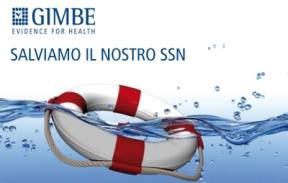All news by respiratory system pathologies
Probiotic administration in Cystic Fibrosis: what do we know?
A very recent Italian study investigated intestinal dysbiosis in Cystic Fibrosis, a disorder that would appear to be related to reduced activity of the CFTR protein itself and may respond to treatment with probiotics.

Over the past 20 years, the gut microbiota of patients with cystic fibrosis (CF) has become a subject of study: these patients have been shown to have gut dysbiosis, which can be related not only to the CF intestinal manifestations but also in part to those of the respiratory system.
A recent Italian study, published in the popular journal "Nutrients", has delved into this issue, analyzing the currently available data.
Gut dysbiosis in CF would be related to the same mutations in the CFTR gene that affect the functionality of the protein channel encoded by it, determining the CF phenotype. Dysfunction of the CFTR chloride channel leads to dense mucus formation and its accumulation along the surfaces of intestinal villi, slowly eliminated. It could thus promote abnormal bacterial adhesion and colonization. Malabsorption of food nutrients, especially the fat component, which is typical in CF, is associated with the appearance of certain microorganisms better adapted to this condition, such as Escherichia coli. Therefore, some "good" bacteria, such as lactobacilli and bifidobacteria, would seem to partially or completely "disappeared" in the CF patients' gut, at the expense of pathogenic species, as Escherichia Coli. This phenomenon, combined with the reduced biodiversity of gut bacteria, would contribute to dysbiosis from the first weeks of life.
Moreover, unlike healthy subjects, in whom the gut microbiota develops rapidly reaching its final composition between 3 and 5 years of age, in children with CF the gut microbiota development appears significantly slower. These differences would appear to persist into adulthood and would correlate with the severity of CF symptoms. Indeed, individuals with severe pulmonary dysfunction (% FEV1 predicted ≤ 40%) would have significantly reduced gut microbiota diversity compared with those with mild or moderate dysfunction. In addition, some therapeutic interventions, such as a high-fat diet, use of antibiotics and antacids administration, which are frequent in CF patients, could exacerbate the situation. This is why probiotics were considered for possible treatment in CF.
The impact of probiotics on CF was analyzed in the most recent Cochrane systematic review, which included 12 studies (464 participants among CF children and adults). Considering the number of pulmonary exacerbations over 4-12 months, patients who received a probiotic suffered 0.32 fewer episodes than controls given a placebo, but this difference did not have sufficient statistical value. Furthermore, it has not yet been possible to define which mixture of probiotic strains is most suitable for these patients.
In conclusion, the currently available data cannot be considered sufficient to indicate that probiotics are essential in CF therapy and in reducing the frequency of CF exacerbation, but further studies are needed.
Reference
Coffey, M.J.; Garg, M.; Homaira, N.; Jaffe, A.; Ooi, C.Y. A systematic cochrane review of probiotics for people with cystic fibrosis. Paediatr. Respir. Rev. 2021, 39, 61–64
Esposito S, Testa I, Mariotti Zani E, Cunico D, Torelli L, Grandinetti R, Fainardi V, Pisi G, Principi N. Probiotics Administration in Cystic Fibrosis: What Is the Evidence? Nutrients. 2022 Jul 30;14(15):3160.
Tam, R.Y.; van Dorst, J.M.; McKay, I.; Coffey, M.; Ooi, C.Y. Intestinal Inflammation and Alterations in the Gut Microbiota in Cystic Fibrosis: A Review of the Current Evidence, Pathophysiology and Future Directions. J. Clin. Med. 2022, 11, 649.
Vernocchi, P.; Del Chierico, F.; Russo, A.; Majo, F.; Rossitto, M.; Valerio, M.; Casadei, L.; La Storia, A.; De Filippis, F.; Rizzo, C.; et al. Gut microbiota signatures in cystic fibrosis: Loss of host CFTR function drives the microbiota enterophenotype. PLoS ONE 2018, 13, e0208171






